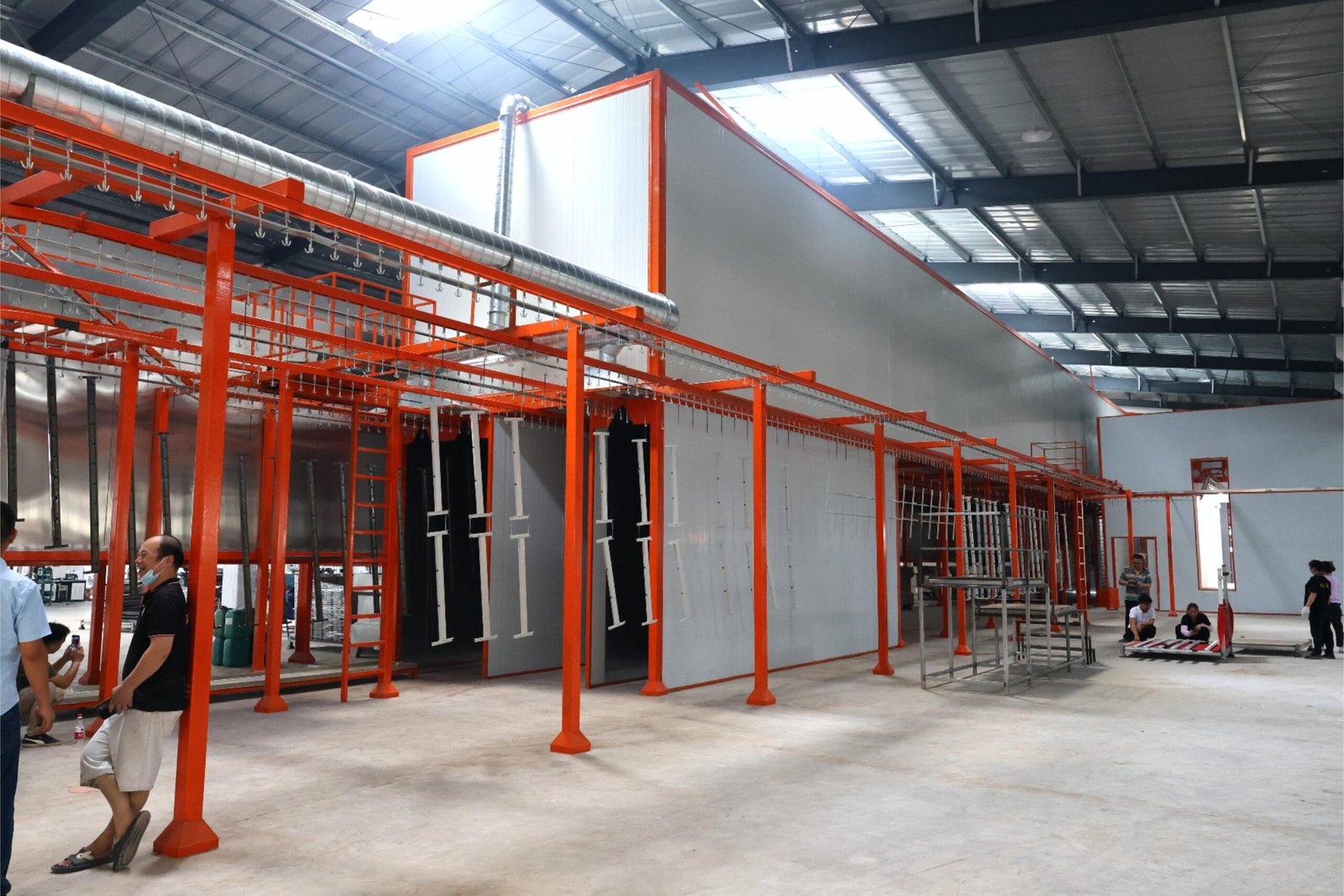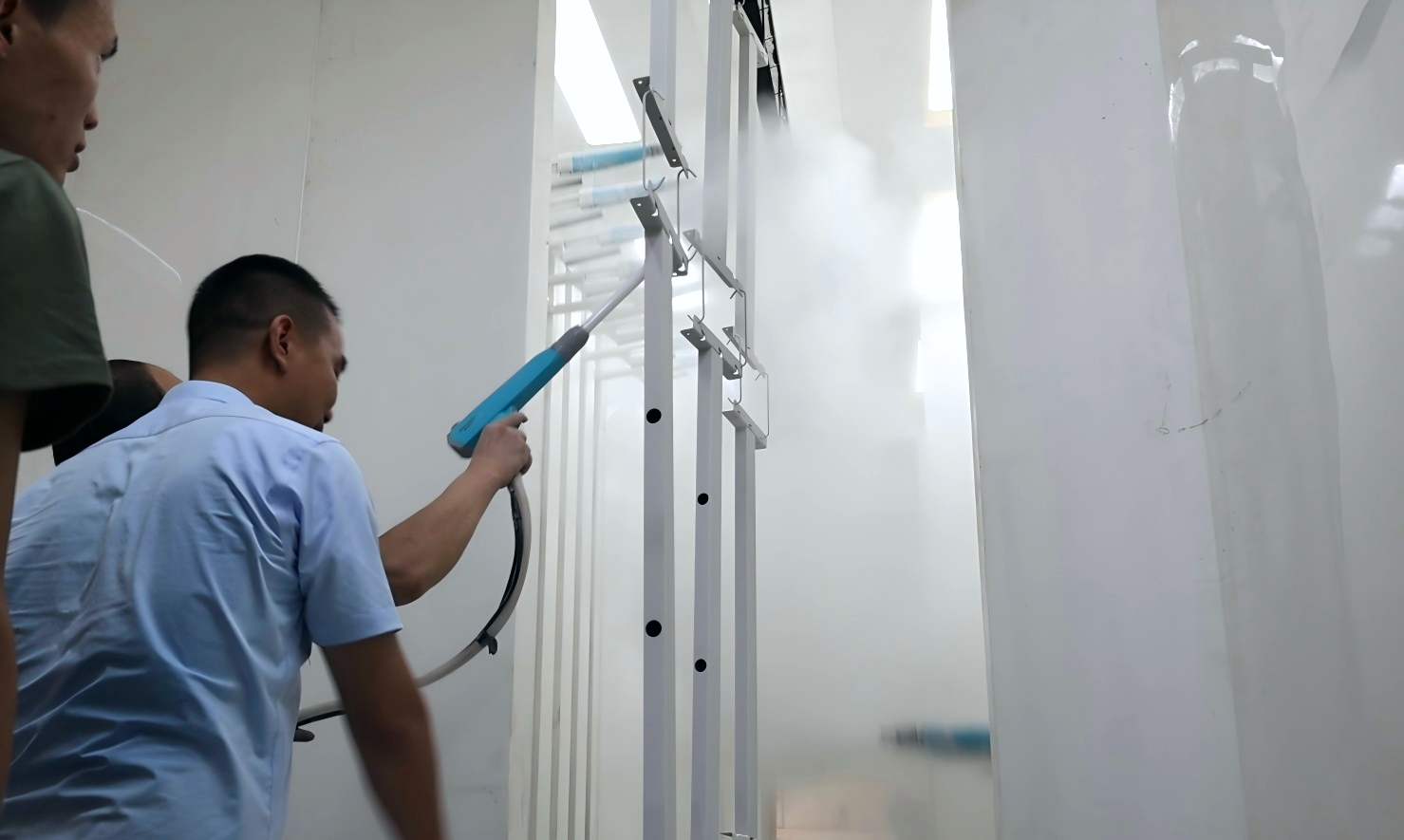Can Powder Coating Be Used for Both Interior and Exterior Applications?

Powder coating looks beautiful indoors—but can it survive the sun, rain, or snow?
Yes, powder coating is suitable for both interior and exterior applications. Its durability, weather resistance, and design versatility make it a smart choice for many environments.
If you’re deciding whether powder coating is right for indoor furniture or outdoor railings, let’s explore what makes it work so well in both.
What is powder coating and how does it work?

Powder coating doesn’t just cover—it bonds.
Powder coating is a dry finishing process where electrostatically charged powder is sprayed onto a surface and then cured in an oven. The result is a hard, protective layer that doesn’t crack or peel easily.
Here’s a simplified view of the steps:
| Step | Description |
|---|---|
| Surface Preparation | Cleaning, degreasing, or sandblasting |
| Powder Application | Electrostatic spray gun charges powder |
| Curing | Oven heats and bonds the powder to the object |
The process doesn’t require solvents, which means it’s safer and more eco-friendly than traditional paint. And the finish? Smooth, thick, and long-lasting.
How durable is powder coating in real conditions?

We’ve installed powder-coated railings and seen them look new after five years.
Powder coating resists chipping, scratching, corrosion, and fading. Whether indoors or outdoors, the finish stays intact longer than liquid paint.
Here’s how durability plays out:
Indoor Benefits:
- No flaking or cracking from daily use
- High resistance to chemicals in kitchens or bathrooms
- Easy to clean with just soap and water
Outdoor Benefits:
- No fading from UV rays
- Withstands rain, snow, and changing temperatures
- Prevents rust on metal components
Durability is why we recommend powder coating for commercial furniture, garden tools, window frames, and many other applications.
Does powder coating stand up to outdoor weather?
Metal left outside usually rusts fast—but not when it’s powder coated.
Yes, powder coating is highly weather-resistant. It blocks UV rays, moisture, and extreme temperature shifts.
Here’s what it protects against:
| Weather Factor | Powder Coating Response |
|---|---|
| UV Exposure | No chalking, no color fade |
| Humidity & Rain | Water barrier prevents rust |
| Snow & Ice | Temperature swings won’t crack it |
That’s why we use powder coating on gates, fences, HVAC enclosures, and even automotive chassis components.
Is powder coating visually flexible enough for interior designs?
One color doesn’t fit all—and powder coating offers hundreds.
Powder coating comes in matte, gloss, satin, metallic, and even textured finishes. That flexibility makes it ideal for interior design.
We’ve matched powder-coated parts to:
- Modern kitchens (sleek matte black)
- Office interiors (brushed silver textures)
- Retail fixtures (vibrant custom colors)
And unlike paint, the finish is uniform with no runs or drips. Every surface looks smooth and professional.
Is powder coating environmentally safe for indoor use?
Concerned about indoor air quality or eco-footprint?
Powder coating is solvent-free, produces almost no VOCs, and overspray can be reused—making it safer for both workers and environments.
Here’s how it compares to traditional liquid paint:
| Factor | Powder Coating | Liquid Paint |
|---|---|---|
| VOC Emissions | Near zero | High |
| Overspray Waste | Reusable | Usually wasted |
| Flammability | Low | High |
It’s also compliant with most indoor air quality standards, so it’s safe for furniture, shelving, lighting, and HVAC covers.
Can powder coating be used on materials besides metal?
While most common on metal, it can work on more than that.
With the right prep, powder coating can be applied to plastics, MDF, and even wood.
Here’s what’s possible:
- Plastic parts (after preheating to reduce static)
- Wood (usually MDF with conductive primer)
- Aluminum, steel, iron—all ideal for coating
That means you can design a full interior space—from metal light fixtures to MDF cabinet doors—all with the same durable finish.
How do I maintain powder-coated surfaces indoors and outdoors?
Good news—it’s low maintenance.
To clean powder-coated surfaces, just use mild soap and water. No polishing or harsh chemicals required.
For best results:
- Wipe surfaces monthly to remove dust
- Avoid abrasive cleaners or steel wool
- Touch up only if physical damage occurs
Even after years of use, powder-coated parts usually look as clean and bright as the day they were installed.
Conclusion
Powder coating works anywhere—inside or out. It’s durable, weatherproof, customizable, and easy to maintain. That makes it the ideal finish whether you’re building a bench, a bicycle, or a building façade.
